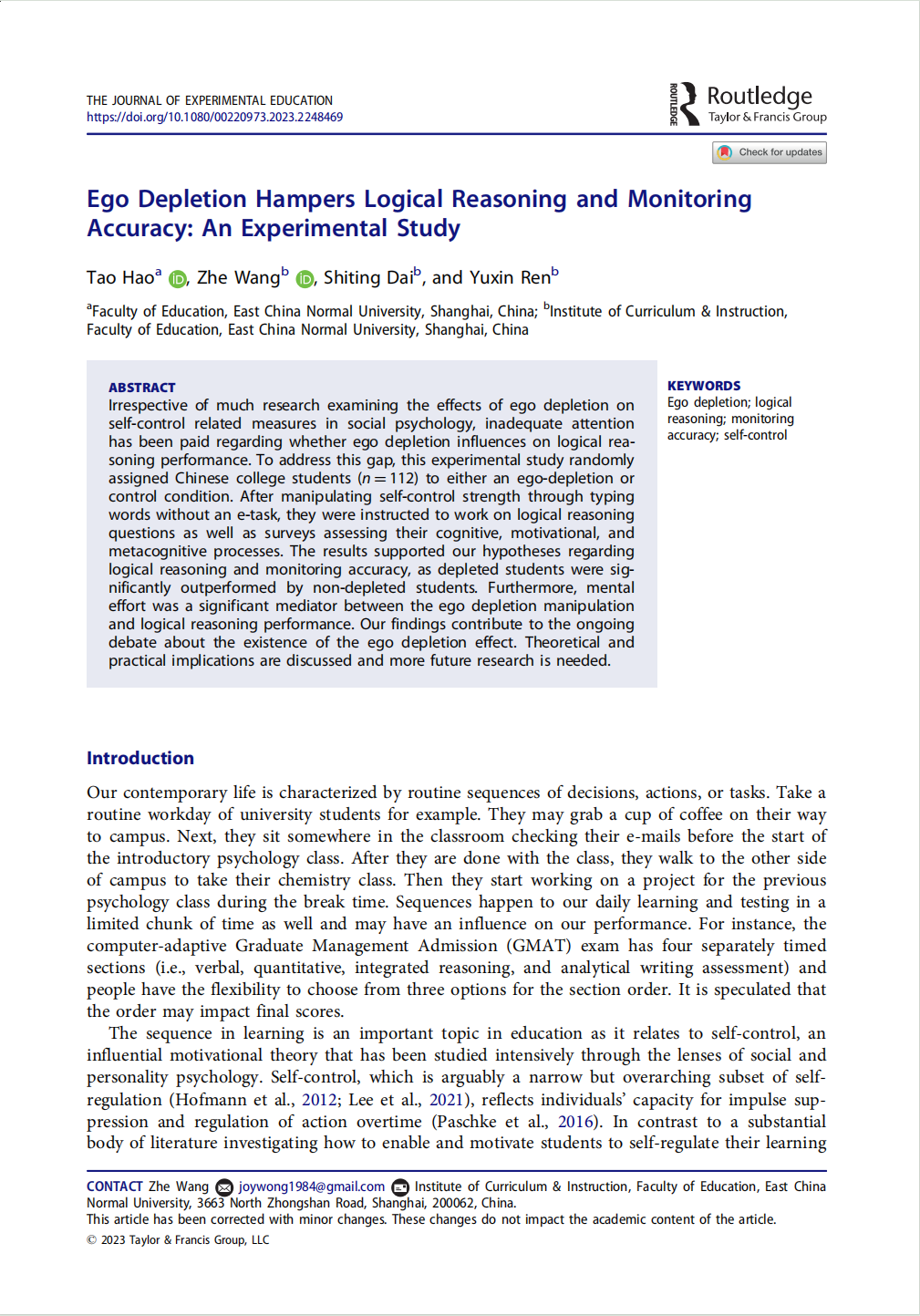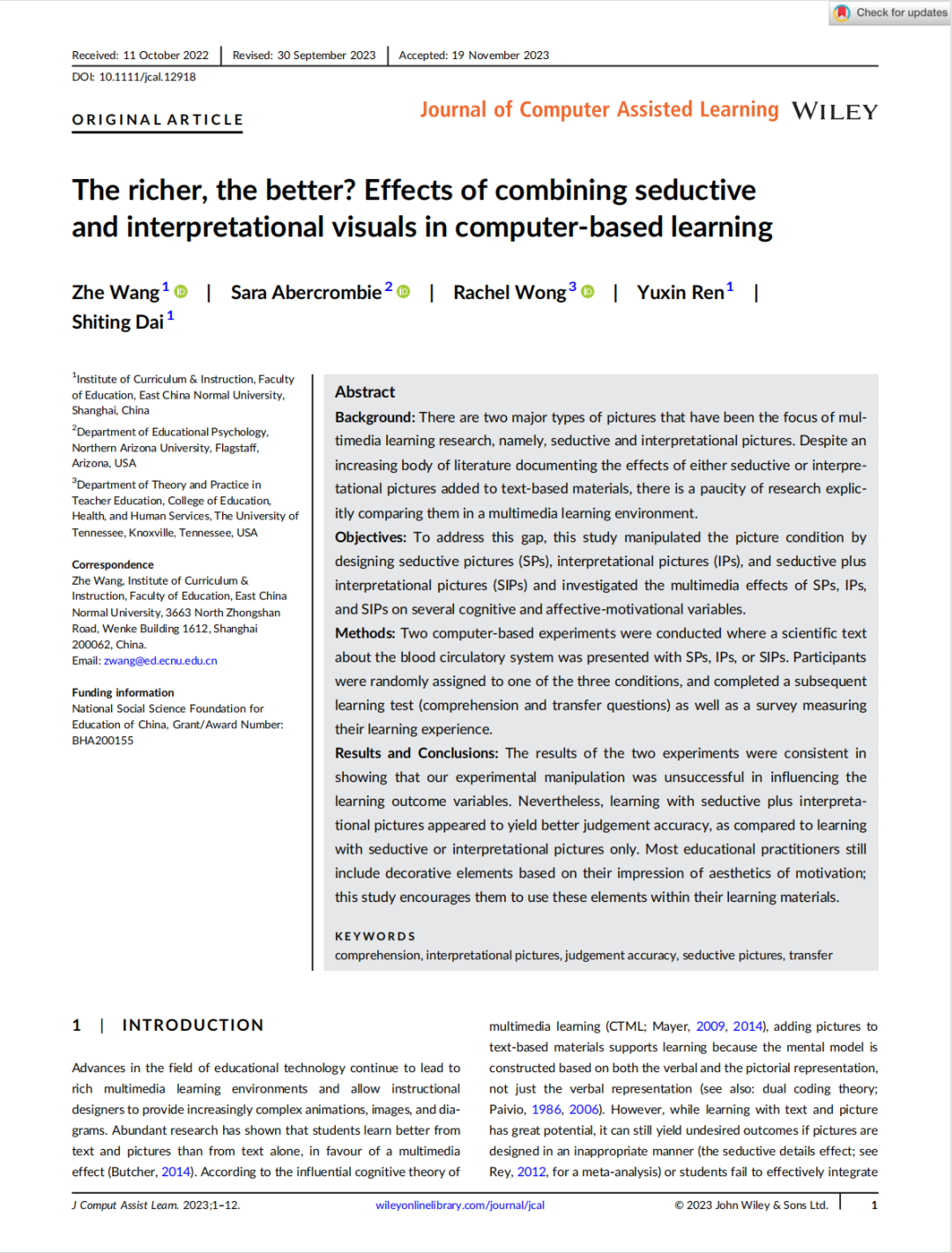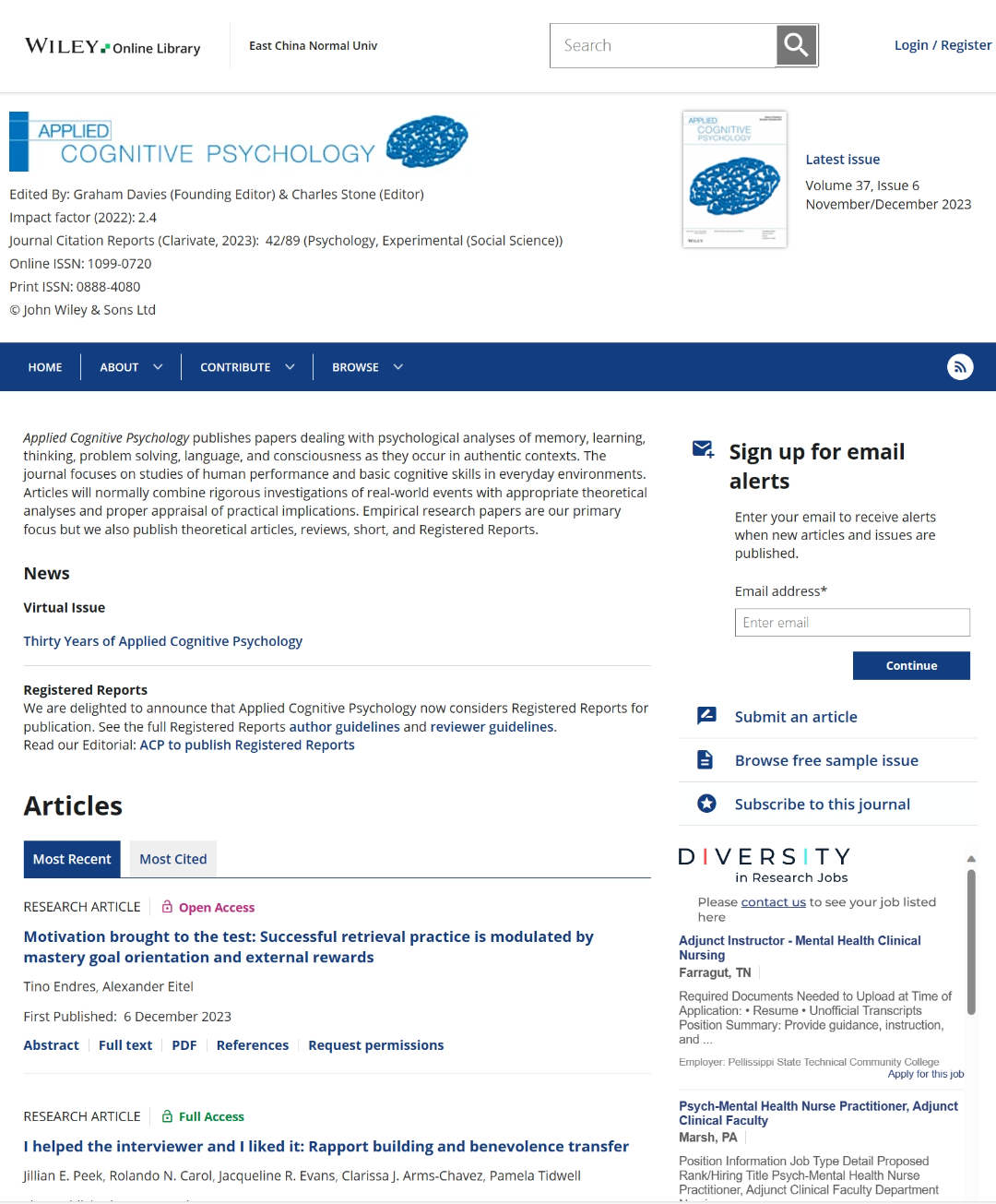ICI Academic ║What impact do learning materials and strategies have on self learning management and reflection?
2023-12-07
When it comes to "metacognitive monitoring", researchers who are unfamiliar with it may be confused. If the term is explained as a noun, it refers to a person's monitoring and management of his or her own thinking and learning process.
More generally, "metacognitive monitoring" means that when we are learning or thinking, we can consciously pay attention to and understand our own thinking process, including understanding when we have understood, when we may have difficulties, and what kind of learning strategies to adopt.

Through such self-monitoring, people can adjust their learning methods to help improve learning results, understanding and retention of knowledge.
Wang Zhe, ICI Associate Professor
In order to better reveal the impact of learning materials and learning strategies on metacognitive monitoring, the team of Wang Zhe from ICI conducted a systematic analysis of the related effectiveness through three experimental studies published on SSCI Journals: The Journal of Experimental Education, journal of Computer Assisted Learning and Applied Cognitive Psychology.



In order to help readers understand related research better and faster, the editor recently interviewed the team leader, Associate Professor Wang Zhe, and summarized the results in a question-and-answer format, hoping to deepen readers' knowledge and understanding.
Q &As
Q1: Could you please first summarize the conclusions of these three studies?
A1: Conclusion 1: When learners’ willpower weakens, it is not only their academic performance that is hurt, but it also leads them to make inaccurate assessments and judgments about their learning process.
Conclusion 2: In a computer-assisted learning environment, providing multiple ways of expressing information may not improve learning efficiency, but it will help students understand their learning status more accurately.
Conclusion 3: When learning, if interesting but unnecessary pictures are added, students may mistakenly believe that the learning materials are relatively simple and the learning process is relatively easy. However, when such pictures were presented during the test phase, students more accurately recognized that these pictures were not relevant to the learning objectives. This suggests that there may be differences in cognitive and metacognitive processes during the learning phase and the testing phase (at least in the listening context).
Q2: In the first study, you focused on the effects of graphic materials and ego-depletion on metacognitive monitoring. Can you introduce the concept of ego-depletion?
A2: Ego depletion is a concept in motivational psychology, which refers to the phenomenon that an individual's self-control ability weakens after dealing with a series of tasks that require self-control and willpower. To put it simply, it's like if you work hard and concentrate all day, you may not be able to resist snacking or insist exercising when you get home at night. This is because you have used so much willpower in other activities throughout the day that you have less self-control and are more likely to indulge in behaviors you originally wanted to avoid.

Q3: How were the experiments in your first study designed? How was the result?
A3: In this experimental study, 112 subjects were randomly assigned to the ego-depletion group or the control group. After manipulating self-control through a task of typing without letter e, they were asked to answer logical reasoning questions with pictures and filled out questionnaires that assessed their cognitive, motivational and metacognitive processes.
Results supported our hypotheses regarding logical reasoning and monitoring accuracy (as reflected by correlations between performance and self-judgment), as ego-depleted students performed significantly worse than non-ego-depleted students.
Q4: The second study focused on image type. Why did you focus on this variable?
A4: This study focused on two main types of pictures, decorative and explanatory pictures. Although a growing body of experimental research has identified and illustrated the effects of adding decorative or explanatory images to text-based materials, there is still a paucity of research explicitly comparing them in multimedia learning environments. In the current increasingly popular computer-assisted learning environment, it has become more and more common to add elements such as pictures, audio, and video to learning materials. However, what we need to think about is, is this “more is better” approach really reasonable?

Q5: How was the laboratory designed for your research? How was the result?
A5: This study manipulated picture conditions by designing decorative pictures (SPs), explanatory pictures (IPs), and decorative superimposed explanatory pictures (SIPs) to study the effects of three types of pictures on multiple cognitive and affective-motivational variables. This study conducted two experiments based on a computer learning environment, presenting scientific texts on the blood circulation system and equipped with SPs, IPs or SIPs. Sixty-four (Experiment 1) and 117 (Experiment 2) participants were randomly assigned to one of three conditions and completed subsequent learning tests (comprehension and transfer questions), as well as a survey measuring their learning experience.

The results of these two experiments consistently showed that our experimental manipulation failed to affect the learning outcome, and perception difficulty and intrinsic load also showed inconsistent patterns in the two experiments. Nonetheless, learning with decorative plus explanatory pictures appears to improve judgmental metacognitive monitoring accuracy, compared with learning with either decorative or explanatory pictures alone. This finding may support the conclusion that only when the visual cues contained in explanatory pictures match the motivational elements in decorative pictures can learners be able to accurately monitor and predict their own learning process (metacognitive monitoring) .
Q6: Can you tell us a little bit more about the topic of the third study?
A6: The third experiment looked at whether adding pictures to students' listening comprehension tests affected their performance. Usually in teaching materials, we will add pictures to present the text content during the learning stage. However, so far it is unclear which types of pictures are included in the test phase, and whether combined with additional instructional support enhance learning from auditory information.
Q7: What experimental design approach did you use in this study? How was the result?
A7: This study adopted a two-factor experimental design and mainly explored what impact the inclusion of decorative pictures with aesthetic or interest-increasing effects in test items, as opposed to representational pictures used for content depiction, and whether to give students an advance preview of the test have on their learning outcomes and metacognitive monitoring.
The results showed that decorative pictures and prompts had significant effects on students' learning outcomes and metacognitive monitoring, and there was a significant interactive effect on listening comprehension. That is, prompts can eliminate the negative effects of decorative pictures; but when representational pictures are used, the prompt effect disappears. Furthermore, representational pictures resulted in higher learning judgments (metacognitive monitoring) compared to decorative pictures. This may indicate that when we used decorative pictures during the test phase, students were more likely to perceive the irrelevant and harmful nature of these pictures.